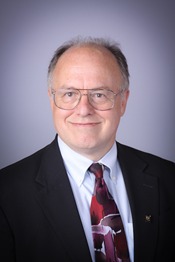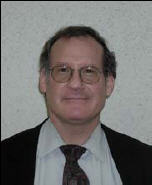Program Information
President's Symposium: Inspiring Leadership

B Curran
R Arenson
D Beyer
B Greenspan
K Kennedy
B Curran
B Curran1*, R Arenson2*, D Beyer3*, B Greenspan4*, K Kennedy5*, (1) Virginia Commonwealth University Medical Center , Richmond, VA, (2) UCSF School of Medicine, San Francisco, CA, (3) Northern Arizona Healthcare, Sedona, AZ, (4) Georgia Regents University, Augusta, GA, (5) Varian Medical Systems, Palo Alto, CA
Presentations
10:15 AM : Welcome and Greetings from Invited Guest, Richard Baron, President, RSNA; Introductory Remarks - B Curran, Presenting Author10:30 AM : The Physicists' Leadership Role in Academic Radiology: The Chair's Perspective - R Arenson, Presenting Author
10:50 AM : Delivering Value Outside the Ivory Tower - D Beyer, Presenting Author
11:10 AM : Observations of a Nuclear Radiologist on the Value of the Medical Physicist - B Greenspan, Presenting Author
11:30 AM : Medical Physics - Adding Value in Industry - K Kennedy, Presenting Author
11:50 AM : Panel Discussion on Leadership - B Curran, Presenting Author
MO-C-BRB-0 (Monday, August 1, 2016) 10:15 AM - 12:15 PM Room: Ballroom B
With the profound changes currently occurring in medicine, the role of the medical physicist cannot stagnate, but must evolve to meet the challenges and opportunities that are presented. Medical physicists must understand these changes and establish themselves not only as relevant but as leaders in this new environment. We must increase our presence in clinical settings such as tumor boards, patient rounds, and the development of new diagnosis, imaging, and treatment techniques. By establishing ourselves as competent scientists, we can and must participate in the development of technologies through research, teaching, and clinical implementation. As medical physicists we must define our roles and value to our physician colleagues, patients, referring physicians, and senior administrators. We cannot afford to be viewed solely as quality assurance technologists, but need to move forward in step with medical and practice advances, becoming recognized as having a leadership role in providing quality research, technological development, and quality patient care.
In this session, four leaders in medical research and healthcare will discuss their observations on how medical physicists have contributed to advancements in healthcare and opportunities to continue leadership in providing quality medicine through the applications of physics to research, education, and clinical practice.
Learning Objectives:
1. Understand the changes in the healthcare environment and how medical physicists can contribute to improving patient care.
2. Learn how medical physicists are currently leading research efforts to improve clinical imaging and diagnosis.
3. Understand the role of medical physicists in developing new technology and leading its translation into clinical care.
Handouts
- 115-31947-385514-118347.pdf (B Curran)
- 115-31948-385514-119639.pdf (R Arenson)
- 115-31949-385514-119640.pdf (D Beyer)
- 115-31951-385514-119638-183035770.pdf (K Kennedy)
Contact Email:






